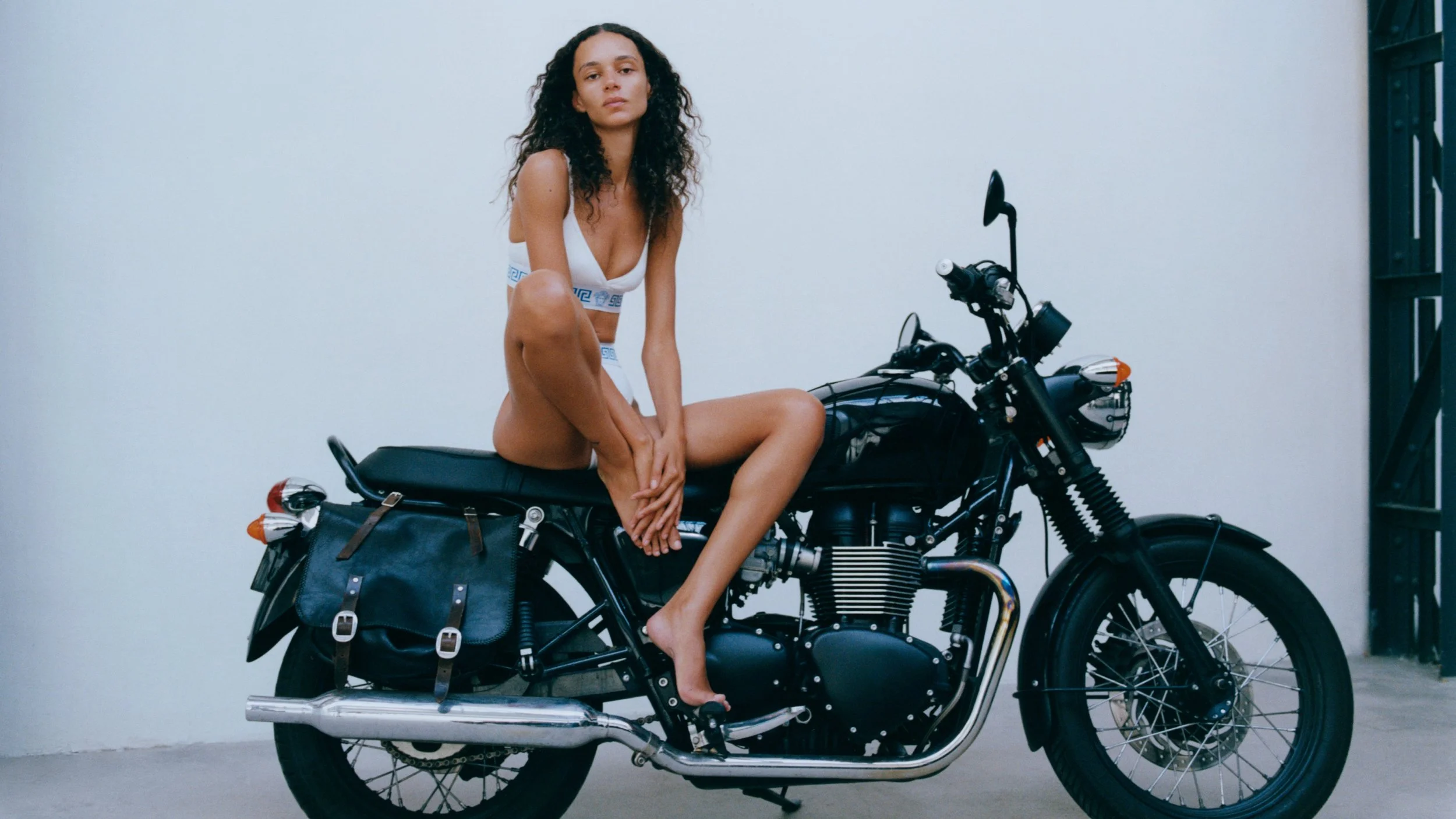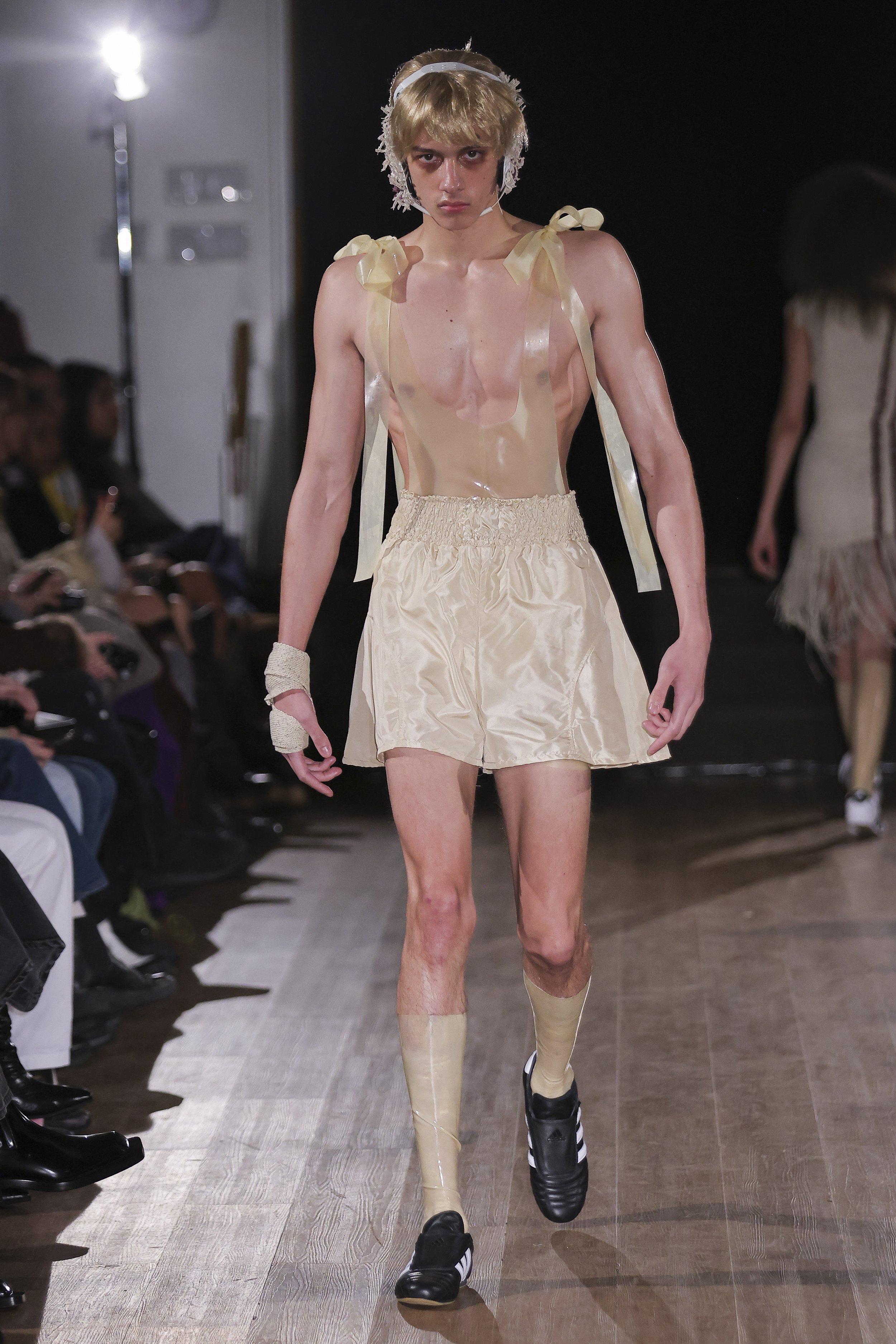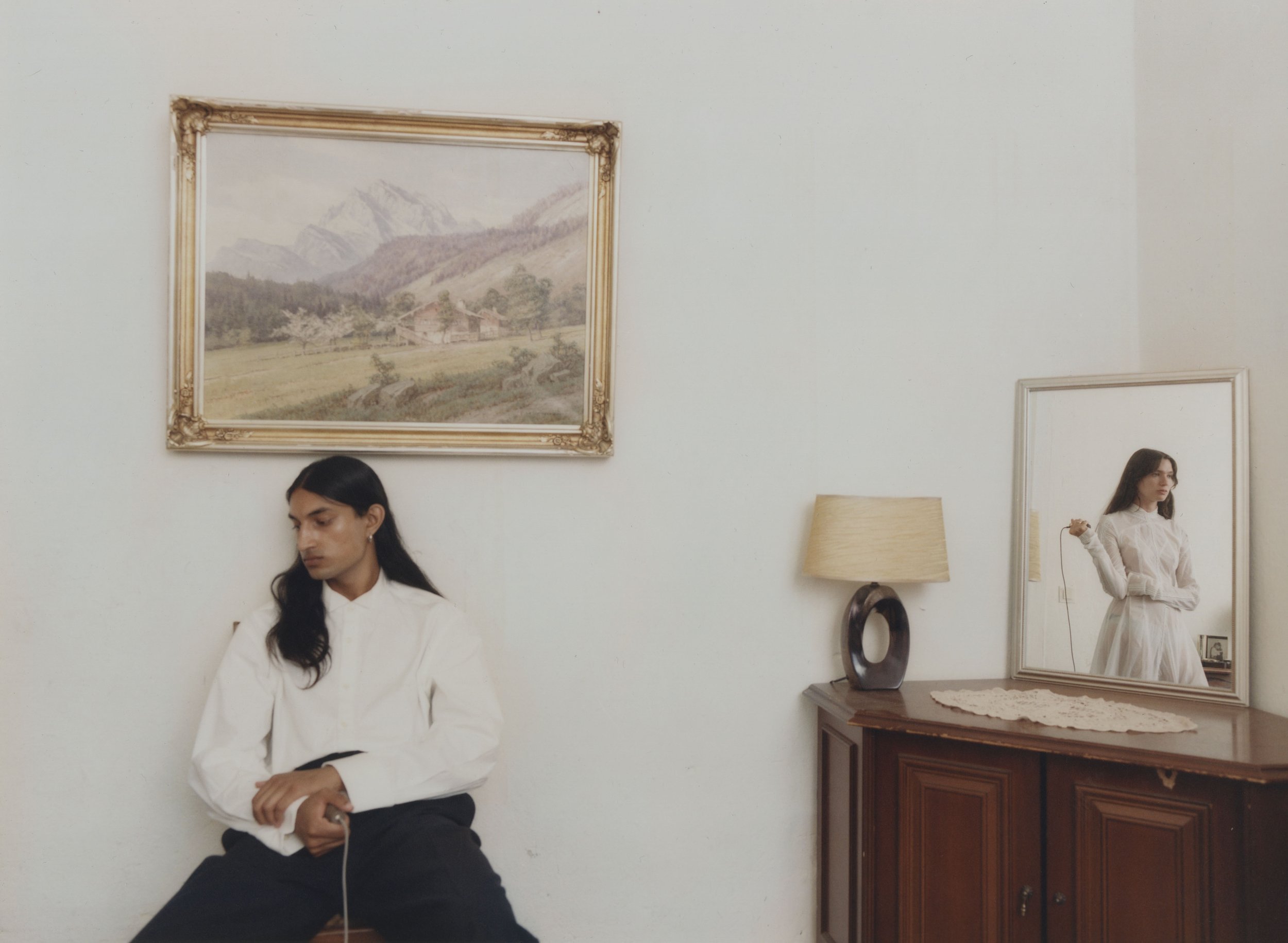text by Kim Shveka
The fashion world in 2025 looks increasingly like an elaborate game of musical chairs, with creative directors joining, defining, and leaving major fashion houses at breakneck speed. While few truly new faces have emerged (Julian Klausner’s appointment at Dries Van Noten in January being a notable exception), the same familiar faces are leaping from house to house, most recently with Demna Gvsalia departing Balenciaga for Gucci and Glenn Martins taking over for John Galliano at Maison Margiela. This reluctance to introduce fresh talent, though disappointing to those hoping for a more dynamic industry, isn’t surprising given brands’ desire to protect profits by relying on familiar names. However, seeing tenured creative directors adapt their aesthetics to new brands is rather engaging, hinting at potential revivals for houses in need of revision.
One exception to the rule is Jonathan Anderson, whose distinctive vision and forward-thinking approach to design turned Loewe into a critical and commercial darling. Now as he departs the Spanish-brand after more than a decade to take over at Dior, we’ll delve into his journey: from his early life to launching his own label, his pivotal role in Loewe’s revival, and his upcoming tenure at Dior, exploring what his time with the luxury house might bring.
Jonathan Anderson was raised just outside of Magherafelt, a small town in Northern Ireland, during the final decades of the Troubles, a time when conflict seeped into everyday life. Although his family home was not directly exposed to violence, the weight of tension, fear, and division was always present. Armored vehicles in the streets, news of bombings, segregated communities, and a sense of uncertainty shaped the backdrop of his childhood. Living through such a politically charged and emotionally fraught environment gave the young designer a heightened sensitivity to contrast, conflict, and identity.
As a child, Anderson turned inward, developing an early fascination with objects, theater, and the power of imagination used as tools of escapism from a reality that felt brittle and divided. He has spoken about feeling like an outsider, not only because of the surrounding political unrest but also because of his own queer identity in a conservative landscape, feelings that later translated into his designs.
In his adult work, we see this reflected not in political statements, but in his aesthetic of disruption and fluidity: clothing that refuses fixed categories, silhouettes that question proportion, and a deep love for craft and heritage. Anderson tried to reassemble something fragile and broken into something beautiful and whole.
Jonathan Anderson’s love for fashion started was initially triggered by an obsession with James Dean, dressing like him, even taking up smoking to better resemble Hollywood’s original bad boy. Later on, while Hedi Slimane was in his prime at Dior with his signature skinny suit, Anderson worked at a department store that put everything which was too small to sell on the discount rack. Now with affordable access to the aesthetic, in lieu of donning the “real thing,” the aspiring young designer started going out regularly to gay nightclubs in Dublin. After notoriously being rejected from Central Saint Martins, he went to the only university that accepted him—London College of Fashion, joining a menswear course.
Struggling to launch his menswear brand, JW Anderson, Jonathan felt like an outsider, due mostly to the fact that he wasn’t considered a real craftsman like McQueen or Galliano, and by not qualifying for a top art school. Recognizing his own talent and potential, Anderson persisted in a system that wasn’t for him, he kept full confidence in his ideas, knowing even from the ripe age of twenty that one day he’d be one of the greatest in the industry.
Founded in 2008, JW Anderson quickly stood out for its bold, gender-fluid designs and intellectual approach to fashion, but it was still considered a niche market and was known mostly in fashion circles in London. The true turning point came in 2013, when Jonathan Anderson’s breakthrough womenswear collections led to a minority investment by LVMH and his appointment as creative director of Loewe, a moment that catapulted him into a global spotlight overnight.
Jonathan Anderson’s first collection for Loewe in 2014 made a big splash in the fashion industry and was widely discussed by many fashion critics who were struck by his decision to completely reset the brand’s aesthetic while still honoring its heritage. Quickly, young and relatively unknown Anderson, was considered a groundbreaking designer, praised for his modern, playful, intellectual vision grounded in minimalism, craft, and originality. Anderson positioned Loewe as a leader in artistic luxury and for the following eleven years he kept confirming his status as one of the most distinct and intelligent designers ever.
With each season at Loewe, Anderson continued producing visionary clothing and accessories that became signature, viral pieces, while enhancing Loewe’s market presence and financial performance with each collection.
After many speculations and rumors, in March it was finally announced that Anderson would be leaving Loewe stating: “While my chapter draws to a close, Loewe’s story will continue for many years to come, and I will look on with pride, watching it continue to grow, the amazing Spanish brand I once called home.”
Sidney Toledano, adviser to LVMH chairman and CEO Bernard Arnault considers Anderson “to be amongst the very best,” stating, “What he has contributed to Loewe goes beyond creativity. He has built a rich and eclectic world with strong foundations in craft which will enable the house to thrive long after his departure.”
Leaving Loewe on a high note, Jonathan Anderson’s next move quickly became a speculation amongst the fashion crowd. Following Kim Jones’s departure from Dior in January and persistent rumors surrounding Maria Grazia Chiuri’s potential exit after nine years, many began to suspect that Anderson would soon take the reins at the French house. In fashion, rumors often become reality, and by mid-April, it was confirmed that Anderson would indeed be joining Dior, though initially only as the creative director of menswear. Many considered this role to belittle Anderson’s ability to make womenswear and a missed opportunity for his talent to be translated into Haute Couture. However, just three days ago, Dior officially announced that Jonathan Anderson would become the sole creative director of the entire house.
Anderson’s appointment marks the first time a sole creative director has been employed at Dior since Christian Dior himself. A decision so rare that it makes Jonathan Anderson the first non-founder designer in history to control all creative fronts in the history of fashion. For LVMH, it’s a major risk and privilege—demanding not just fashion talent, but a deep understanding of cultural storytelling, stamina, and longevity.
This leads us to consider why such an unprecedented opportunity was given specifically to Jonathan Anderson. By now, we know his talent is undeniable: he managed to produce sixteen collections a year across his label, a collaboration with Uniqlo, and his work at Loewe. He was critically acclaimed for honoring Loewe’s heritage while elevating the brand’s relevancy and commercial success through his strong artistic vision. He is also known for his professionalism and humanity in the workplace, a vital quality in today’s fashion industry. But when a role of this significance is given to a single designer, with so much at stake, we’re left to think; perhaps there’s something deeper at play?
Perhaps it’s his ability to not just design clothes but to shape the cultural and emotional language of a house as iconic as Dior.
Jonathan grew up in the shadow of conflict, and while the influence may not be overt, the butterfly effect of those early experiences can be felt in the tension, nuance, and depth that define his work today. Christian Dior grew up during World War I and later witnessed the devastation of World War II, which directly preceded the launch of his legendary “New Look” in 1947. Dior’s signature designs, such as soft shoulders, cinched waists, and full skirts were more than elegance, but a response to the austerity he had experienced. He was expressing his desire to escape and dive into a world of harmony and balance. Dior designed so he could restore beauty from the ruins, he created a sense of femininity, dignity, and hope for a world that longed to be renewed. Despite their differing origins of both history and location, Anderson’s and Dior’s creative aspirations might be driven by the same place of grief and devastation; a consummate aptitude for sartorially sublimating humanity’s darkest moments.
For the future of Dior with Anderson, we can safely predict that the brand is poised for a bold new chapter; a yet-to-be-seen approach to design through the lens of modern artistry.
Although the demand for a designer to produce eighteen collections per year, two of them being haute couture is controversial, the prospect of the Dior house operating under a cohesive artistic vision is intriguing. Anderson is unlikely to continue his signature gender-neutral approach, and his interplay between menswear and womenswear will definitely be highly anticipated in the coming fashion weeks. What remains to be seen is whether Anderson will opt to steer Dior away from romanticism, suiting, and streetwear, leaning potentially into a more radical direction that aims not only to sell but to change the fashion landscape.
Watch Jonathan Anderson’s final collection as Creative Director at Loewe, via Vogue Runway






























































































